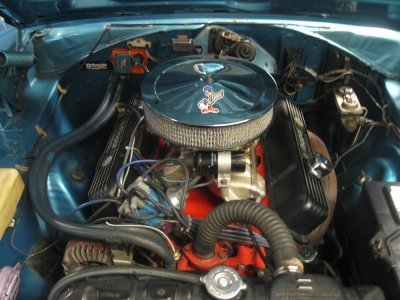BelvedereSatellite1966
Active Member
Hi!
Bought a Satellite 1966 with a 383.
On the engine there is valve covers from mopar performance.
On the drivers side there is a breather attached, but the other valve cover there are no ventilation attached.
When the engine is warm there are coming a little bit of smoke from the breather, when the hood is closed you cant see the smoke coming out to give you an idea how much smoke coming out.
So it's not much smoke coming out.
The oil looks find, no signs of water in the oil.
I've noticed that my vacuum reading is shaking and moving around 2 in/hg on idle, and what i read i may have some sticky valves.
I cleaned my breather as it was a tip from someone when you have unsteady vacuum-reading at idle, and it struck me that it's wierd that i may have sticky valves as the engine was teard down and has only been running about 15 hours since that(teardown by prevoius owner).
I've tried to read and look at pictures on other engines with only a breather on one side of the engine, but i'm starting to feel worried that this setup is bad as i've only seen people running PVC and breather or breather and breather.
So what should i do?
I have a Edelbrock performer rpm and the factory vacuum-port on this is now connected to the brake booster and the vaccum-port on the carburator is plugged permanent, but i should be able to drill it out again.
So i wonder if i just remove the oil fill cap on the passenger side and replace with another breather, or buy a PCV and plug to manifold?
After that i thinking of try some seafoam(or whatever i can find here in Sweden) and see if i can get a better vaccum reading.
Any thoughts on this?
Thank you in advance, and excuse my spelling and grammar.
Br.
Viktor
Bought a Satellite 1966 with a 383.
On the engine there is valve covers from mopar performance.
On the drivers side there is a breather attached, but the other valve cover there are no ventilation attached.
When the engine is warm there are coming a little bit of smoke from the breather, when the hood is closed you cant see the smoke coming out to give you an idea how much smoke coming out.
So it's not much smoke coming out.
The oil looks find, no signs of water in the oil.
I've noticed that my vacuum reading is shaking and moving around 2 in/hg on idle, and what i read i may have some sticky valves.
I cleaned my breather as it was a tip from someone when you have unsteady vacuum-reading at idle, and it struck me that it's wierd that i may have sticky valves as the engine was teard down and has only been running about 15 hours since that(teardown by prevoius owner).
I've tried to read and look at pictures on other engines with only a breather on one side of the engine, but i'm starting to feel worried that this setup is bad as i've only seen people running PVC and breather or breather and breather.
So what should i do?
I have a Edelbrock performer rpm and the factory vacuum-port on this is now connected to the brake booster and the vaccum-port on the carburator is plugged permanent, but i should be able to drill it out again.
So i wonder if i just remove the oil fill cap on the passenger side and replace with another breather, or buy a PCV and plug to manifold?
After that i thinking of try some seafoam(or whatever i can find here in Sweden) and see if i can get a better vaccum reading.
Any thoughts on this?
Thank you in advance, and excuse my spelling and grammar.
Br.
Viktor



 .
.
















